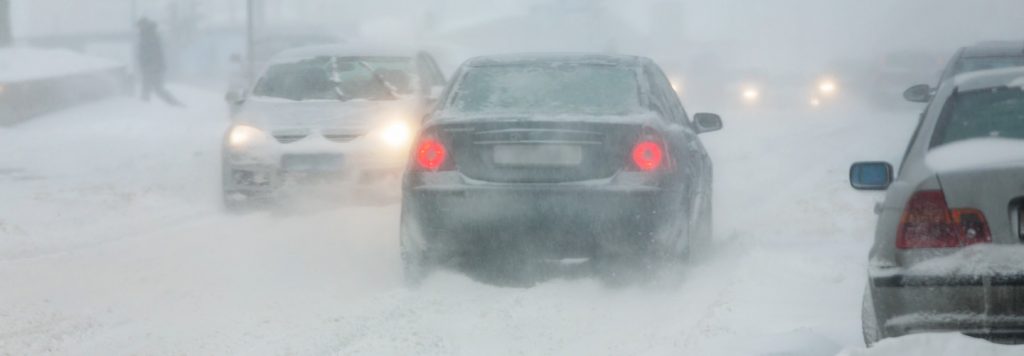Electric vehicle winter driving tips
Practical ideas for safe, comfortable EV motoring

It’s only natural. Winter driving includes bone-chilling cold along with snow, ice, sleet, slush and any other kind of nearly frozen precipitation concoction you can imagine. And you know the reality, slippery roads, and highways. For most of us, winter driving is a reality that can mean some white knuckles, slow travel times and delayed arrivals.
With EVs (Electric Vehicles) growing in popularity, you may wonder how these cars fare in wintery conditions. That’s a good question because there are several aspects to consider.
It’s all about the battery.
Any Electric Vehicle Winter Driving Tips post can’t be taken seriously without some thought about how winter weather affects an EV’s power. The cold is a clear adversary1 to the performance and capacity of almost any battery. It’s important to understand that cold conditions can slow charging, decrease the range and draw down your storage faster by pulling wattage for heating your vehicle’s interior and defogging windows.
EV drivers can easily find ways to conserve their electric use2 while driving in the winter. Here are a few Electric Vehicle winter driving tips for especially cold conditions.
• Preheat while you are plugged in. By using the charger’s power to heat your EV initially, you can ensure your car is fully charged when starting out. And with an EV you can do that in your garage with the door closed. Most EVs have apps that let you do this remotely.
• Localize your heating. Many EV models have heated seats and even heated steering wheels. Many drivers find by using these instead of heating the entire cabin with warm air; they can conserve energy use while maintaining their driving comfort.
• Park in a garage when possible. Reducing the accumulation of snow and frost on windows can help make for less energy use when preparing for winter driving. Many public parking garages now feature EV charging stations.
• Use the sun. Being in sunlight will help naturally warm the interior of your EV and make for less battery usage to heat and defrost your EV.
• Give a little more time for charging. Colder temperatures just slow things down, so you may find that charging can take longer to complete.
• Use regenerative braking as much as possible. By purposely using the brakes more often, it is easier to collect energy from the motion of your EV. This is a smart general tip which is even more useful in the winter when battling the cold.
To learn more about EV charging options, check out another CONNECT blog post entitled: The Very Basics of Electric Vehicle Charging
New battery technology may be coming soon.
New, self-heating batteries3 are on the horizon. These lithium-ion batteries use a thin foil made of nickel that surrounds the battery and draws its power from it. This dramatically improves cold weather performance. Besides being used for EVs, this new technique benefits drones, outdoor robots, and space vehicles.
Specific action for better traction
In a conventional gasoline-powered ICE (Internal Combustion Engine) car, even with automatic transmission, you can select a lower gear to help reduce wheel spin. In an EV there is no conventional gearbox like this, so you have one speed. From a dead stop, electric motors go to full torque instantly which makes for fantastic acceleration. This can also lead to the potential of spinning tires and loss of traction on slippery surfaces.
EV drivers will tell you they find improved traction when they utilize eco- or low-power-mode or their regenerative braking mode. This puts pressure on the wheels so that the car slows without braking. This can help prevent the wheels from locking up and skidding.
Also, EV drivers sharing Electric Vehicle winter driving tips may tell you that the low center of gravity created by battery packs located between the wheels and along the bottom of the frame of the car, helps add to the overall driving stability.
As always, tires matter.
As a practical matter, your tire quality is your best friend for negotiating the roads in adverse weather conditions. While a snow tire offers an extra deep tread that is perfect for accumulated snow, a winter or ice tire uses a softer type of rubber to help provide better grip on slippery ice or compacted snow. Most all-season tires offer a balance of tread and rubber composition to help with all driving conditions. The National Highway Safety Administration has a good tire-buying resource to start your research.
Another wise Electric Vehicle winter driving tip is to monitor your tire inflation levels to get the most performance out of any tire and to prevent premature wear.
EVs are attracting new users all over the world, no matter what the weather or road conditions. And simple winter driving know-how will help make EVs practical vehicles for cold weather climates, anywhere.
We hope you found these Electric Vehicle winter driving tips valuable. Whether you own an electric vehicle already or are interested in learning more, Xcel Energy wants to help you stay connected with important news and the latest views. Join our Electric Vehicle Network.


